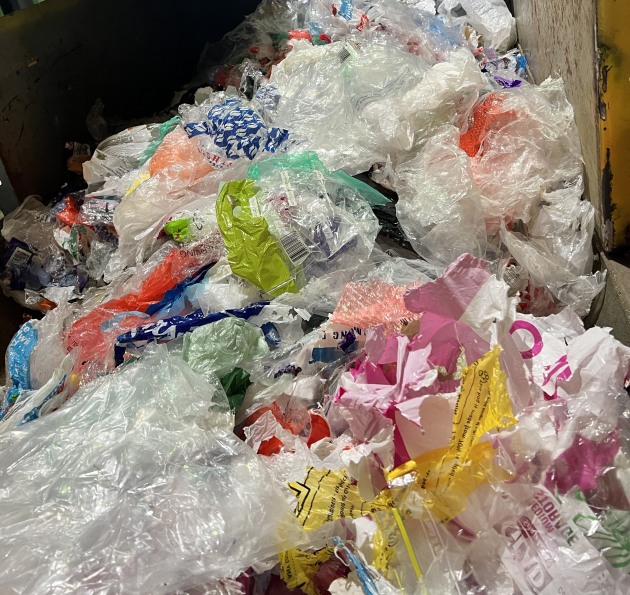The recent events that have seriously disrupted soft plastic recycling in Australia highlight the country’s vulnerable recycling ecosystem.
Despite recycling rates flatlining since 2017, meshed with the REDcycle debacle and warehouse stockpiles of plastic, Australia has every opportunity to transform the way it handles its post-consumer plastic packaging.
The government’s ambitious targets, including a target of 70 per cent of plastic packaging being recycled or composted by 2025, mirrors Australian consumers’ positive attitude towards recycling. According to the 2022 Australasian Recycling Label Consumer Insights Report, 87 per cent of Australians believe that recycling at home is the right thing to do.
Turning this into a reality, however, is going to require the entire supply chain to come together, and there are ample reasons to do so.
WORLD VIEW
According to Plastics Europe’s latest report, in 2021, 90 per cent of the world’s plastics production was fossil-based. Post-consumer recycled plastics and bio-based/bio-attributed plastics respectively accounted for 8.3 per cent and 1.5 per cent of the world’s plastics production.
These figures are a stark reminder that the world has a very long way to go if it is to transition to net zero by 2050. Yet transition it must. For humanity to attain a circular and climate-neutral plastics economy, we need accelerated systemic change and increased collaboration between all stakeholders and policy makers.
Let’s put this into context – an assessment presented at COP27 clearly demonstrates that if we are to avoid exceeding 1.5 degrees in temperature, our remaining carbon budget is 380 billion tonnes – equivalent to less than a decade of emissions at our present rate.
We have no option but to drastically reduce our emissions. And one of the fundamental ways of doing this is by reducing our household waste footprint.
By 2030, the energy embodied in items that get thrown away will represent up to 15 per cent of our current CO2 emissions. Between now and then, carbon emissions associated with the production of what eventually becomes municipal waste will grow by up to two-thirds, undermining efforts in other areas of the economy that are getting the most attention, such as energy and transport systems.
The sheer volume of waste and its mismanagement pose the twin threats of direct pollution and loss of resources, poised to increase as populations continue to grow.
AIMING FOR FOOD GRADE
One of the most awkward to recycle plastic fractions happens to be soft film plastics – precisely the materials REDcycle was collecting. In the most recent update on Australia’s progress towards the 2025 National Packaging Targets from the Australian Packaging Covenant Organisation (APCO), soft plastic recycling rates are around four per cent. The rest is landfilled.
The four per cent that do get recycled are only being turned back into relatively low-value products, as the current industrial recycling of post-consumer polyolefin films struggles to deal with the complex mixtures and does not have any suitable decontamination processes that would allow closed loop food-grade compliance for the recycled material.
As these soft film plastics are commonly used for packaging both edible and non-food goods, they play a fundamental role in protecting and extending the shelf life of many foods, which is why, turning these soft plastics back into food-grade polyolefin films, not just diverting them away from landfill and recycling them into high value products, would have a huge impact on lowering their carbon footprint and reduce producers’ reliance on using virgin materials.
And now we have the technology to achieve this. A ground-breaking process, based on supercritical CO2 to decontaminate plastic films back to food-grade quality, aims to fill the gap in the recycling stream where food-safe post-consumer polyolefin films are currently missing.
This innovative commercial process, COtooCLEAN, can be integrated into mechanical recycling operations and uses super-critical CO2 (scCO2) combined with green co-solvents to remove oils, fats and printing inks in a single step, effectively decontaminating polyolefin films under Challenge Test conditions back to food contact levels.
This technology, which not only offers a new recycling stream and facilitates significant reductions in waste to landfill, displacement of virgin resin, and significant savings in resources and reductions in carbon emissions and water usage, is poised to help Australia’s soft film plastic recycling systems.
COLLECTION CRITICAL
In the first instance, however, it is critical to resume the likes of REDcycle’s collection as soon as possible to minimise the impact on consumer’s confidence in the recycling ecosystem and their current habit of returning soft plastics to store.

While the film material collected will still have to be stored for a period, local councils and businesses involved in film manufacture could step in to develop a range of appropriate new markets while recycling facilities are scaled up.
Certainly, the end markets are there for the recycled material, particularly for food-grade recycled film. While there still are technical hurdles to be ironed out, the collection should continue to ensure sufficient feedstock is available when the recycling plants require the higher volumes to make their operation viable.
Ultimately, we all need to ensure that nothing produced slips out of its own loop. In the plastics sector alone the British Plastics Federation estimated that if all plastic were recycled globally this could result in mean annual savings of 30 to 150 million tonnes of CO2, equivalent to shutting between 8 and 40 coal-fired power plants globally.
Australia needs to boost its recycling ambitions and put the packaging sector on track for climate neutrality. This is not a lofty vision – it is an urgent warning to keep the planet’s climate within liveable limits and avoid life-changing scenarios.
This article originally appeared on page 20-21 of the PKN Packaging News magazine.






